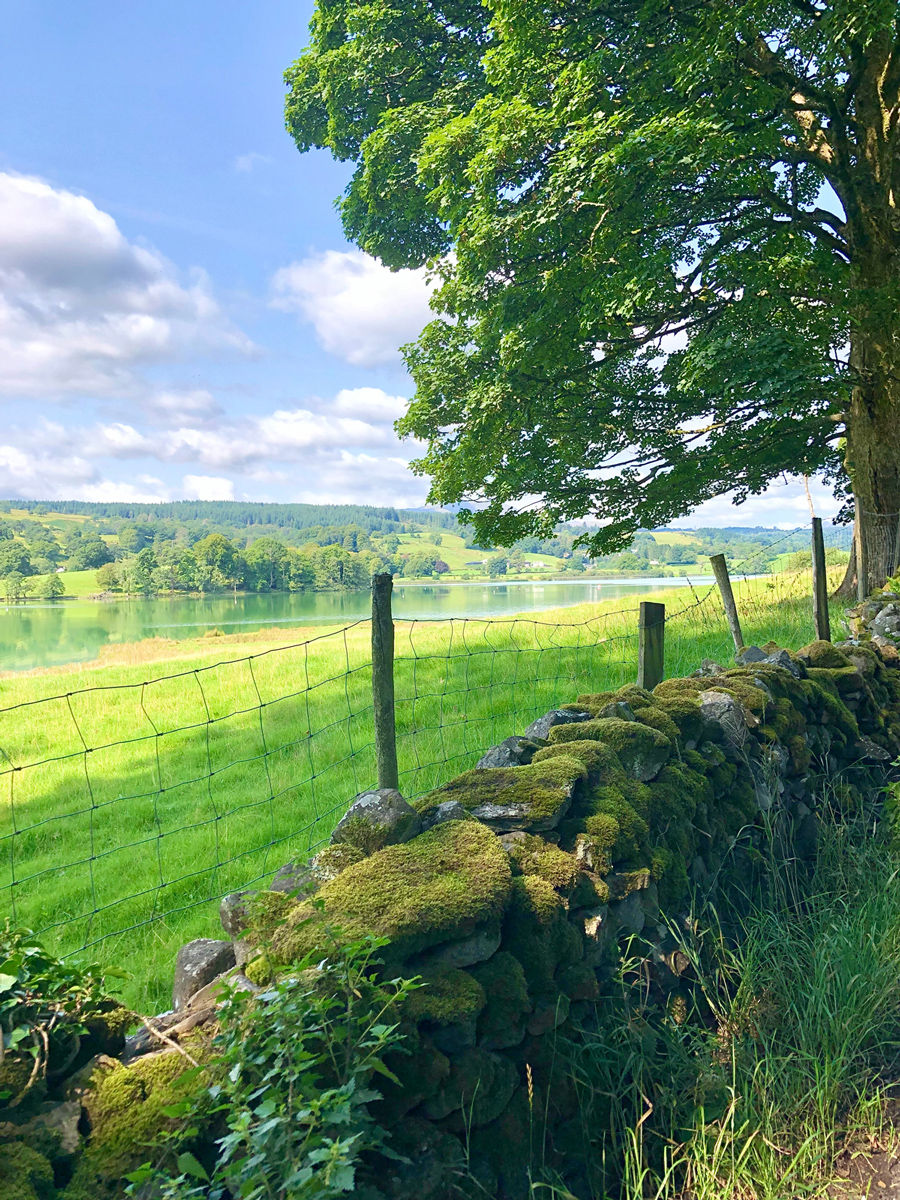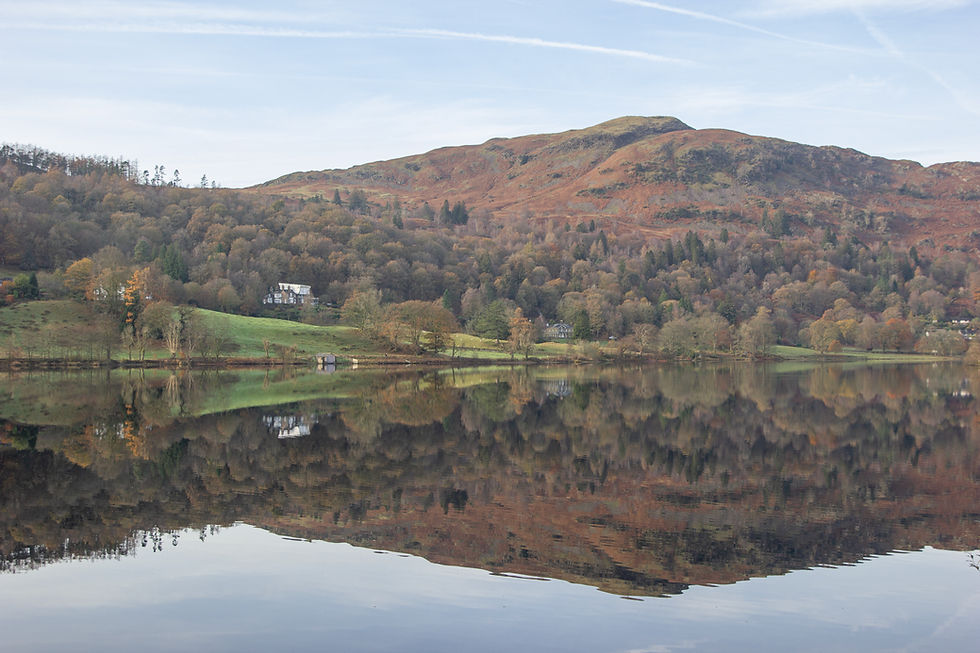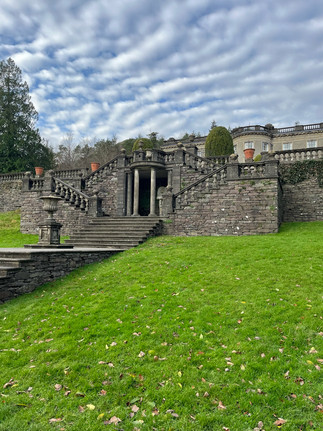The Ultimate Guide to the Lake District National Park (Updated for 2025)
- shanimirwis
- Jan 5
- 15 min read
Updated: Jul 24
The Lake District National Park in the north of England feels like a tucked away paradise that you can't quite believe is real, let alone in England. The lakes are vast and beautiful - and everywhere you look are mountains and fells dominating the landscape. I'm a firm fan of the coast and can speak ad infinitum about the landscape in the south of England - but I think the Lake District has become a serious contender and takes the joint top spot. It is so different; there is no sea, just lakes wherever you look and high vantage points from which to view the surrounding landscape. And it is all so incredibly beautiful. The Lake District National Park is a UNESCO World Heritage Site - and, as well as 16 lakes, 214 fells and countless hikes, it is also home to the tallest mountain in England - Scafell Pike. There are so many reasons to visit this wonderful area, and you'll find many of them listed in this ultimate guide to the Lake District National Park.
A note about the weather: I've been known to chase the sun and, previously, I'd only ever been to the Lake District in the summer months when it is packed with tourists and can be difficult to get around. For the last couple of years though, I've taken trips to the Lake District in November, when it's a little more off-peak and also to witness the lakes in all their autumnal glory. I experienced blue skies as well as rain - and even in gloomy weather, the Lake District surpassed all expectations and I can truly understand why back in the day, so many artists and authors were drawn here and inspired by the landscape. It is glorious in any season - however, the autumn colours are just something else! This post isn't exclusive to autumn though - I've included adventures from my summer explorations as well. So read on for the ultimate guide to a scenic trip in the Lake District to understand why so many people fall in love with this landscape and why I keep returning.

Where is the Lake District?
The Lake District National Park is in Cumbria, in the north northwest of England. It is the biggest of England's national parks, home to England's highest mountain (Scafell Pike) and also to England's largest lake (Windermere).
How long do I need here?
Anywhere from three days to one week is enough to soak in the beauty of the Lake District (although if you want to get a few hikes in, always allow more time). You could visit the Lake District as part of a wider England road trip - see my guide here.

Getting around
🚙 Driving or renting a car is an easy way to visit the Lakes. It's a big area, so having a car is convenient as it will allow you to get to places further away. The only downside is that parking can be difficult in peak season.
🚌 The bus system is excellent! If you're staying in Windermere, Keswick, Ambleside or Grasmere, these all have great transport links.
⛴️ There are launches and ferries which allow you to see the lakes and also as a mode of transport to get to the starting points of some great hikes (for example Catbells).
🏡 Where to stay in the Lake District
The Lake District encompasses a large area - so where you stay depends on which places you want to visit. If you're following this itinerary, you'll be coming from the south and therefore driving through Windermere, which is a lovely town to stay in. Grasmere village is a little more central/closer to more lakes. And anywhere near Ullswater lake (the second largest lake in England) is also a great location to base yourself, with beautiful mountain views surrounding you. I've stayed in each of the places listed below and I can vouch for them all!
The Daffodil Hotel & Spa is a gorgeous hotel right on Grasmere lake, with the most beautiful views. The spa has a pool, sauna and steam room. The hotel is across the road from Wordsworth's house in Grasmere.
The Swan Hotel and Spa is right by Lake Windermere but in a much quieter location in Newby Bridge. I liked that it was a bit out of the way and not in the centre of Windermere itself. The hotel is lovely, the staff very friendly, and the spa facilities are really nice. There is a lovely outdoor area at the front of the hotel with tables and chairs right on the River Leven.
The Inn on the Lake in Glenridding on the shores of Ullswater is the perfect place to stay! It's giving country house vibes and is a great location for many hikes in the area. If you plan on climbing Helvellyn, it's literally a stones throw from the starting point of the hike in Glenridding.
And now, read on for your ultimate guide to the Lake District National Park...
Windermere
Probably the most famous place in the Lake District, this is a good place to start if coming from the south, as you'll most likely be driving through here anyway. It would be difficult to miss the star of the show - Lake Windermere - as it's the largest lake in England. There are plenty of things to do in the area, including...
Orrest Head

For views of Lake Windermere, climb the short but steep Orrest Head - a hill at 238 metres high. It is a 3.5km round trip and takes about 30 minutes to walk each way. The route is an accessible route (it's steep, so would require an electric wheelchair) and the start of the trail is right by Windermere Station. On a clear day, you'll be able to see Lake Windermere, Old Man of Coniston, Scafell Pike and other well known peaks. Fun fact: Orrest Head was the first fell that Alfred Wainwright (author and illustrator of the eminent seven-volume Pictorial Guide to the Lake District) climbed in the Lake District.
Queen Adelaide's Hill
Another great viewpoint (and a shorter climb) is Queen Adelaide's Hill. It only takes about 10 minutes to walk up from the nearby car park (there are two nearby: Windermere Lake Viewpoint car park and Rayrigg Meadow car park).

If you're parking at Windermere Lake Viewpoint car park (the sign says Windermere Hammarbank), start your walk by turning right as you exit the car park and walking down Rayrigg Road (which feels a bit backwards because you're essentially going "downhill"). You'll soon reach a gate on the right which has a National Trust sign saying 'Millerground' - walk through and follow the footpath which takes you alongside an unexpected waterfall 😍 and then to the lakeshore, and finally to another gate which leads you up Queen Adelaide's Hill. Note: this is a proper hill and not suitable for buggies or wheelchairs. The views are really fantastic and especially lovely at sunset, so bring a picnic blanket and enjoy your surroundings!

Water sports
It would be a shame to visit a renowned a lake as Windermere without dipping a toe in! I'd recommend canoeing, kayaking, or hiring a boat to see the lake in all its glory. For the more adventurous, why not try your hand (or feet) at paddleboarding, waterskiing or wakesurfing! We did stand up paddleboarding in the summer with Low Wood Watersports and it was £35 per person for 2 hours.
Staying near Lake Windermere
In terms of where to stay in the area, there are three main towns near Lake Windermere: Windermere, Bowness-on-Windermere, and Ambleside. If you plan on hanging around Lake Windermere, one of these three locations would be your best bet on where to stay.
Grasmere
The Lake District is the kind of place you're casually wandering around, when you suddenly approach a picture-perfect lake reflecting with mirrored precision the trees and hills behind it and you can't quite believe that what you're looking at is real. Grasmere is one such lake. It catches you unawares as you drive through Windermere, Ambleside and then Rydal - and all of a sudden Lake Grasmere is there, looking gorgeous whatever the weather. Grasmere was Wordsworth's favourite place in the Lake District and he described it as "the loveliest spot that man hath found." 🥹


Dove Cottage
Once you've had a walk along the lake, head to Wordsworth Grasmere where you can visit William Wordsworth's house - Dove Cottage, as well as the Garden-Orchard and the museum (see website for ticket prices). Wordsworth moved to Grasmere at the age of 29 and was relatively unknown at the time. He is considered to be one of the foremost English poets and one of the first Romantics. His most famous poem, 'I Wandered Lonely as a Cloud' was inspired by the daffodils he saw on the shores of Ullswater. Wordsworth lived at Dove Cottage with his sister Dorothy (and then later on with his wife Mary as well) from 1799 to 1808. The house was acquired by the Wordsworth Trust to preserve as a museum and it has been open to the public since 1891; it is well worth a visit.

Loughrigg Terrace
To see Grasmere Lake from a higher vantage point, take the path to Loughrigg Terrace. It starts in White Moss Common car park (there are two car parks pretty near each other), then takes you through the woods and then up Loughrigg Terrace. It's a circular route that takes about 1 hour and 15 minutes to complete, and the views over Grasmere Lake are excellent. It's not too difficult a hike and there are sections of it that are quite flat and easy to walk along. Be aware though that there are also a couple of steep inclines at the beginning. If you have time, you can visit Rydal Cave at the same time (it adds approx 20 minutes each way to your walk).
Grasmere Gingerbread
Before leaving Grasmere, make sure to stop off at Grasmere Gingerbread to sample what is considered the best gingerbread in the world! It can be found at Church Cottage, Grasmere, Ambleside LA22 9SW.
Visit a town/village
You're spoilt for choice when it comes to picturesque towns and villages in the Lake District. Some of the best places to stop off at include Ambleside, Rydal, Grasmere and Hawkshead.
Climb England's Tallest Mountain - Scafell Pike
No ultimate guide to the Lake District National Park would be complete without mentioning England's tallest mountain - Scafell Pike. There are a few different routes to reach the top; we went via the Corridor Route (probably the most difficult but also known to be the most scenic).
Distance: 12.8km (8 miles)
Time: Approx 7 hours
Start and finish: Car park at Wasdale Head Green
Route: There are good instructions on the Lake District website; I've linked their route and map here.
It is 978 metres high and on a clear day you can see peaks in Ireland, Scotland, Wales and the Isle of Man! This hike should not be underestimated though, in particular the last scramble towards the top. There are a few main routes up Scafell Pike and they each start in a different place. I wouldn't call any of them easy - whichever route you choose, you're in for a tough day:
Via Brown Tongue, from Wasdale - this is the shortest route, but it is also very steep.
Across Bow Fel and Esk Pike, from Langdale.
From Seathwaite in Borrowdale.
The Corridor Route - this also starts in Wasdale but goes via the mountain pass at Sty Head.

We hiked option 4 - the Corridor Route (naively thinking we've got this in the bag). It is an extremely intense and long hike, full of steep inclines, narrow paths in places, and the boulders towards the top seem to go on endlessly 😅 The very last section up to the peak is climbing up loose rock - and this is a bit nerve wracking if there are lots of people in front of and behind you. I think this section needs to be done regardless what route you take, as this is the final ascent to the peak. We completely underestimated this hike but nature and the mountains are a beast; so go expecting a tough day out, and you will enjoy it! If all of the above doesn't put you off, climbing the tallest mountain in England via the Corridor Route is a great experience, so if you have the stamina and feel you are fit enough, I would choose this option! The scenery is fantastic on this route and you'll pass a few tarns and walk over a mountain pass. The views are vast on a clear day and it is a circular route meaning you won't be returning the same way you came, so this keeps things interesting.

When we got to the top, the view was obscured by cloud - but it had been clear the rest of the way up, so we managed to see excellent views the rest of the hike. Make sure you have at least 2 litres of water and plenty of food and snacks to keep you going (you'll need it). All in all, it's a great day out, particularly if it's sunny and clear skies. As with all hiking, if the weather is looking bad, don't attempt hiking Scafell Pike that day; there are sheer drops, and the boulder-field near the top is difficult to navigate in bad weather (in good weather, you need to follow the cairns to keep on track, so if the visibility is poor, you risk getting lost). Scafell Pike generally sees a lot of sudden cloud - so even on a clear day, come prepared!
Go for a drive
There are a number of great drives and famous (or infamous) roads in the Lake District. If you have a car, this is the perfect way to see areas you might not get to otherwise. You'll see so much just by driving around and passing different lakes - but for some iconic drives, why not try one of the below suggestions.
Hardknott Pass
Hardknott Pass is a narrow road built by the Romans, involving twists, turns and a 33% incline! It is notorious for being a very difficult drive and should only be taken on by confident drivers. It is the steepest road in England (along with Rosedale Chimney Bank in Yorkshire) and the views along the route are vast and beautiful. Off-peak it is relatively quiet but expect it to take a little longer in summer. The drive starts in Eskdale, just after the cattle grid and is approximately 13 miles to Little Langdale. Care should be taken when driving as some sections are really steep and there are sharp bends which make it hard to see oncoming vehicles. Also be extra cautious if it's been raining, as the surface will be very slippery (it can be closed in winter if the conditions are icy). Driving this road is a great experience but it is considered a challenging road, so if you're new to driving (or not confident with hairpin bends), maybe give this a miss.
Honister Pass
This is another great road to drive, with dramatic views and some sharp turns. I drove from Keswick taking the B5289, stopping off at Honister Slate Mine car park to see the view, and continuing on until Buttermere. You can also start the drive from the Cockermouth side, taking the B5292 towards Buttermere. If you have time, you can visit the Honister Slate Mine which is on the way; it is the last working slate mine in England, offering tours of the mine, as well as climbing routes. There are also sharp bends on this route, so drive with care and be extra cautious in rainy weather and in winter.


Kirkstone Pass
Probably my favourite drive in the lakes, this is a lovely route, especially off-peak when there aren't many other cars around. It is two lanes unlike some of the other Lake District drives - so this makes it a safer driving option. Kirkstone Pass is the highest road mountain pass in the Lake District and a drive worth taking. From the car park at the top of the pass, you'll be able to see Brothers Water in the distance; it is a beautiful view, especially on a sunny day. And even when overcast, it is so dramatic and moody; you really can't go wrong! Start the drive by taking the A592 Patterdale Road in Windermere and just following the road towards Ullswater.
In the summer you might get stuck behind a tour bus but that's all part of the seasonal crowds. And in the winter you may be greeted by low clouds, so take care if the visibility is poor. And always be sure to watch out for the occasional sheep on the road! If you're looking for more of a thrill, "The Struggle" is a road off the A592, which you can reach by turning left just before the Kirkstone Pass car park. It is a steep route (and an infamous one for cyclists) and more narrow than the A592, with hairpin bends.
Buttermere Lake


This picturesque lake is one of the most beautiful in the Lake District (and considered one of the nicest places in England), and it can be walked around in its entirety in under 2 hours. It's a mostly flat and easy 4.5 mile circular walk, and the reflections on all sides of the lake are breathtaking, particularly in autumn. After heavy rain, there are a couple of sections of the path which get a bit flooded, so you may be ankle deep in water; be sure to be wearing good walking boots or wellies. If you're driving here, the closest car parks are the National Trust Buttermere Village car park and Gatesgarth Farm car park - both of which have limited spaces, so head here early if you're visiting at a busy time of year. Buttermere Lake is a stunner and somewhere I keep returning to! Seeing this lake is truly one of the best things listed in this ultimate guide to the Lake District National Park - and whilst you're in the area, why not check out nearby Crummock Water and Loweswater.
You can also see Buttermere Lake from a higher vantage point by hiking one of the many routes in the area.

Wainwright's favourite hike was Haystacks (on his request, his ashes were scattered on this fell), offering spectacular views of Buttermere and the surrounding landscape. I chose to do a circular route starting at Gatesgarth Farm car park, going up Fleetwith Edge to Fleetwith Pike, then onto the summit of Honister Crag and Haystacks. It's a difficult and steep hike and requires some scrambling, especially on the way down - but the views along the route are amazing, especially of Buttermere and Crummock Water. The hike is 6 miles and took about 5 hours; you can find the route on AllTrails under 'Gatesgarth, Fleetwith Pike and Haystacks Circular.'
Friar's Crag

This is an easy spot to reach without too much effort. Park up at the Lakeside car park CA12 5DG (pay and display) and then walk past the theatre for about 10 minutes, through a bit of woodland, until you reach Friar's Crag. You'll find a few benches here, and the views across Derwentwater are lovely. I visited on a rainy day so it was a bit overcast but very quiet and still. On your way back to the car, be sure to stop at Crow Park (there's a small gate) which is opposite the theatre; you'll see a view of Derwent Island and Catbells.
Hike Helvellyn via Striding Edge

One of the best things to do in this ultimate guide to the Lake District!
There are a few routes up Helvellyn - the third highest mountain in England - and this route via Striding Edge should not be underestimated! This hike was voted the top hike (!) in ITV's program 'Britain's 100 Favourite Walks with Julia Bradbury'. It is certainly one of the best and most challenging hikes I've ever done, and the views along the way are spectacular. This hike on a clear day made me realise how vast and varied the Lake District is, and how with a bit of altitude, you get to see the Lakes in a completely different way. I'm hoping to put together another more detailed post on this hike, so for now my instructions are to follow the route on the AllTrails app 😁 And be prepared for a tough but rewarding day out, involving some proper scrambling and sheer drops. Not for the fainthearted.

Rydal Grot
If you're not into mountains and are more into keeping your feet on stable ground, this lovely little hidden gem can be found in the Rydal Hall gardens, in the village of Rydal. The Grot, or Grotto, was built in 1668 as a viewing place to frame Rydal falls. It inspired William Wordsworth and John Constable, among others artists. If you park in the car park at Rydal Hall and walk into the gardens with Rydal Hall on your left, continue until the end of the main path and you'll reach a bridge - from where you can view Rydal Grot and the waterfall below. It's a gorgeous viewpoint and in rainy weather, the waterfall makes quite a noise! To get down to the grot, retrace your steps back across the bridge and you'll see a low gate with a sign for the "Quiet Garden". Walk through the gate and if you keep left, the path will lead you through a tunnel and to the river, with the grot and waterfall in front of you. You're allowed inside the grot, so if the door is closed, open it and go inside! The window frames the waterfall so beautifully - and you can really see why artists were inspired at this spot. Once you're done here, be sure to check out the rest of the lovely Rydal village and Rydal Cave.
Surprise View

For a view that requires little walking or effort to get to, and packs a punch in terms of visuals, head to Surprise View (Borrowdale, Keswick CA12 5UU). The view is truly amazing, especially at sunset. There are two small car parks and you just cross the road to get to the view - it's that easy! The road leading up to the view is quite windy and narrow, so do take care. The name of the place really reflects what it is; it's an unsuspecting place with the view almost hiding behind the trees and then opening out before your eyes. Don't miss this spot!
Watch a sunset
And finally, if you've read any of my other blog posts, this one kind of goes without saying: be sure to catch at least one sunset when visiting the Lake District. There's something about watching the sun setting over a lake with reflections of the trees and mountains around you! Head to Windermere, Grasmere or Buttermere for great sunset views. For a higher viewpoint (and as mentioned earlier in this post), Queen Adelaide's Hill is a good sunset spot.
Hope you've enjoyed this ultimate guide to the Lake District National Park! Let me know if I've missed anything in the comments below. I feel like this still only scratches the surface of things to do in the Lakes - I'm sure I'll be back for more. And if you're planning on visiting other places in England, check out my ideal two-week road trip itinerary.
Happy travels!
Shani x




























